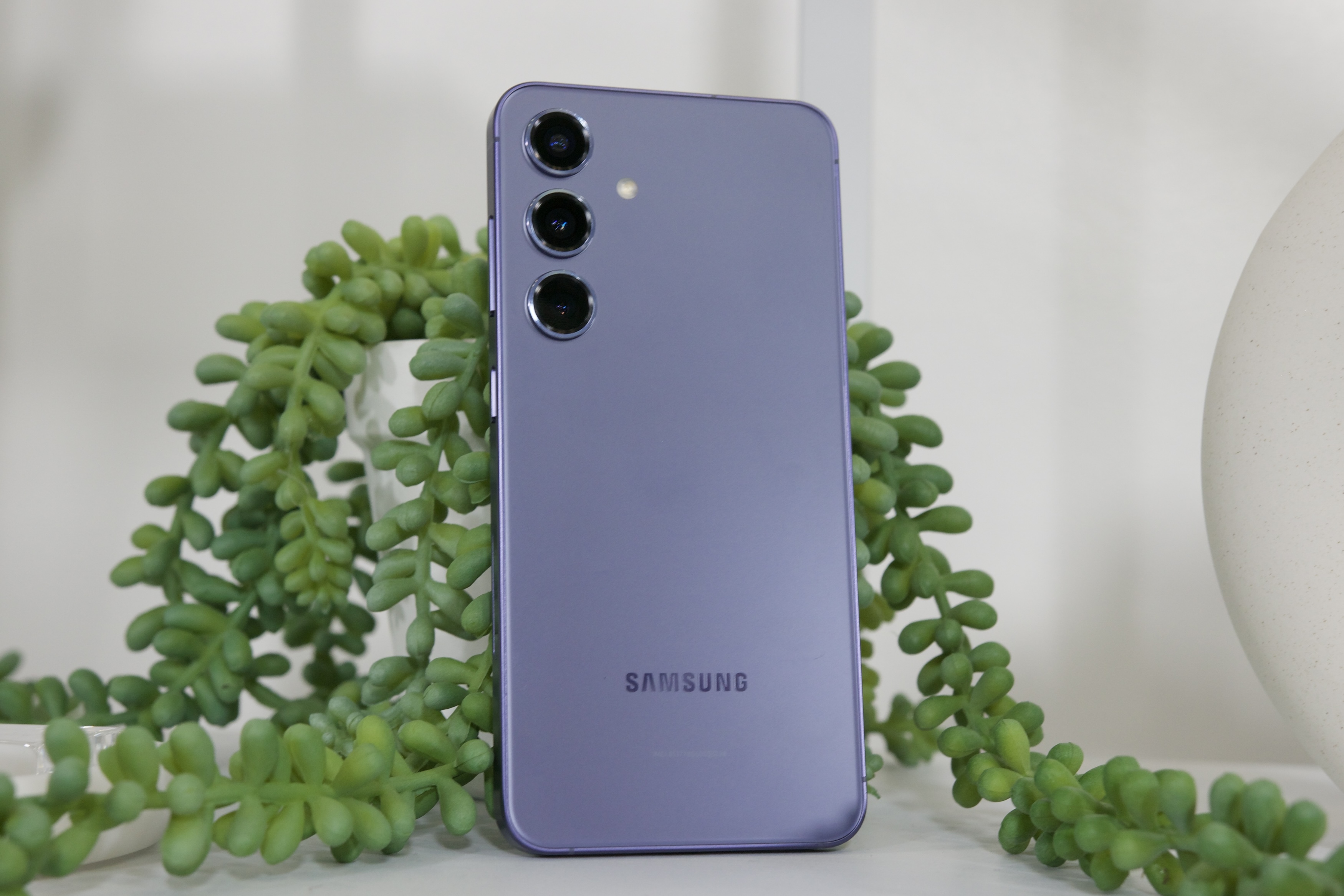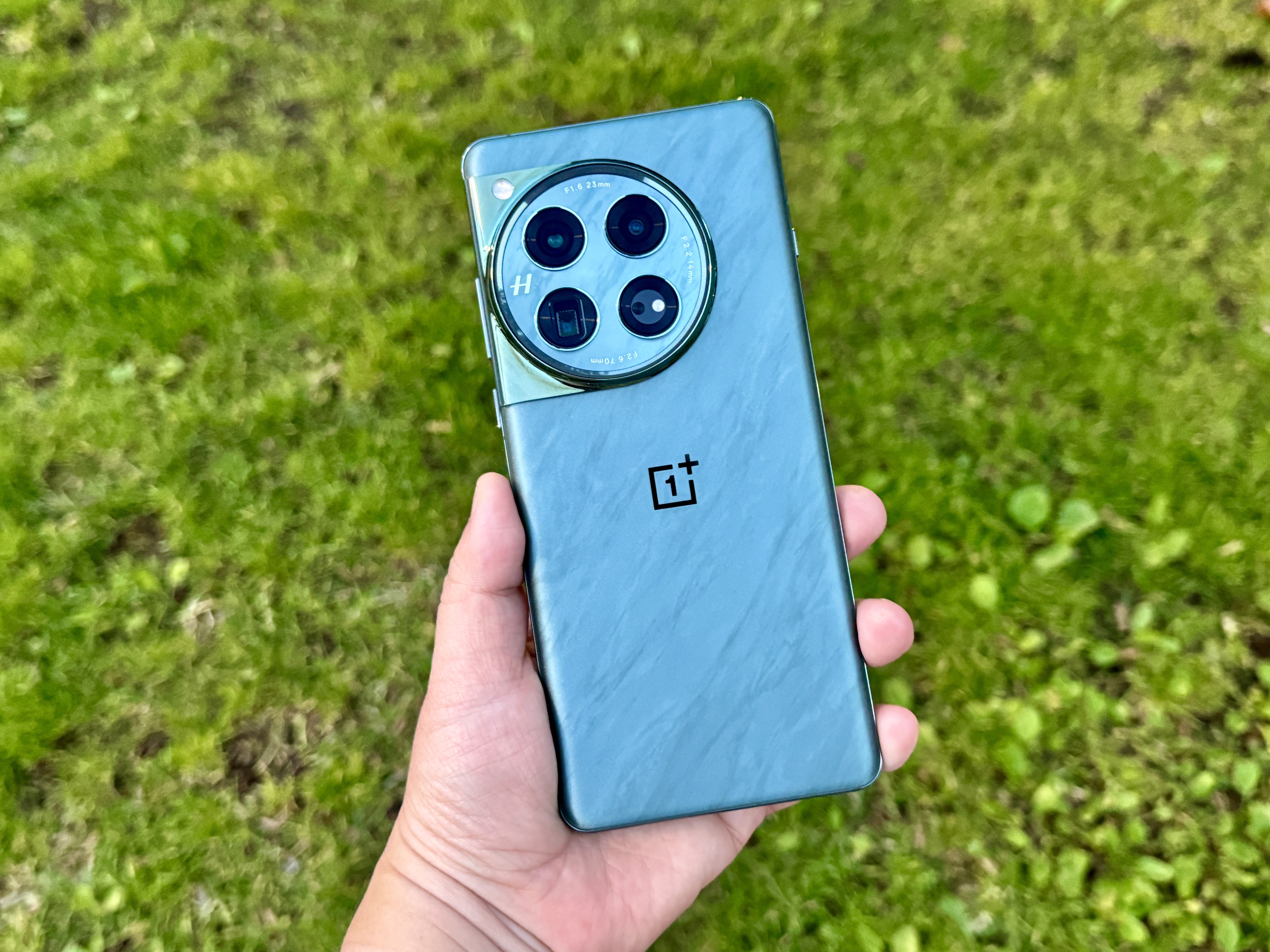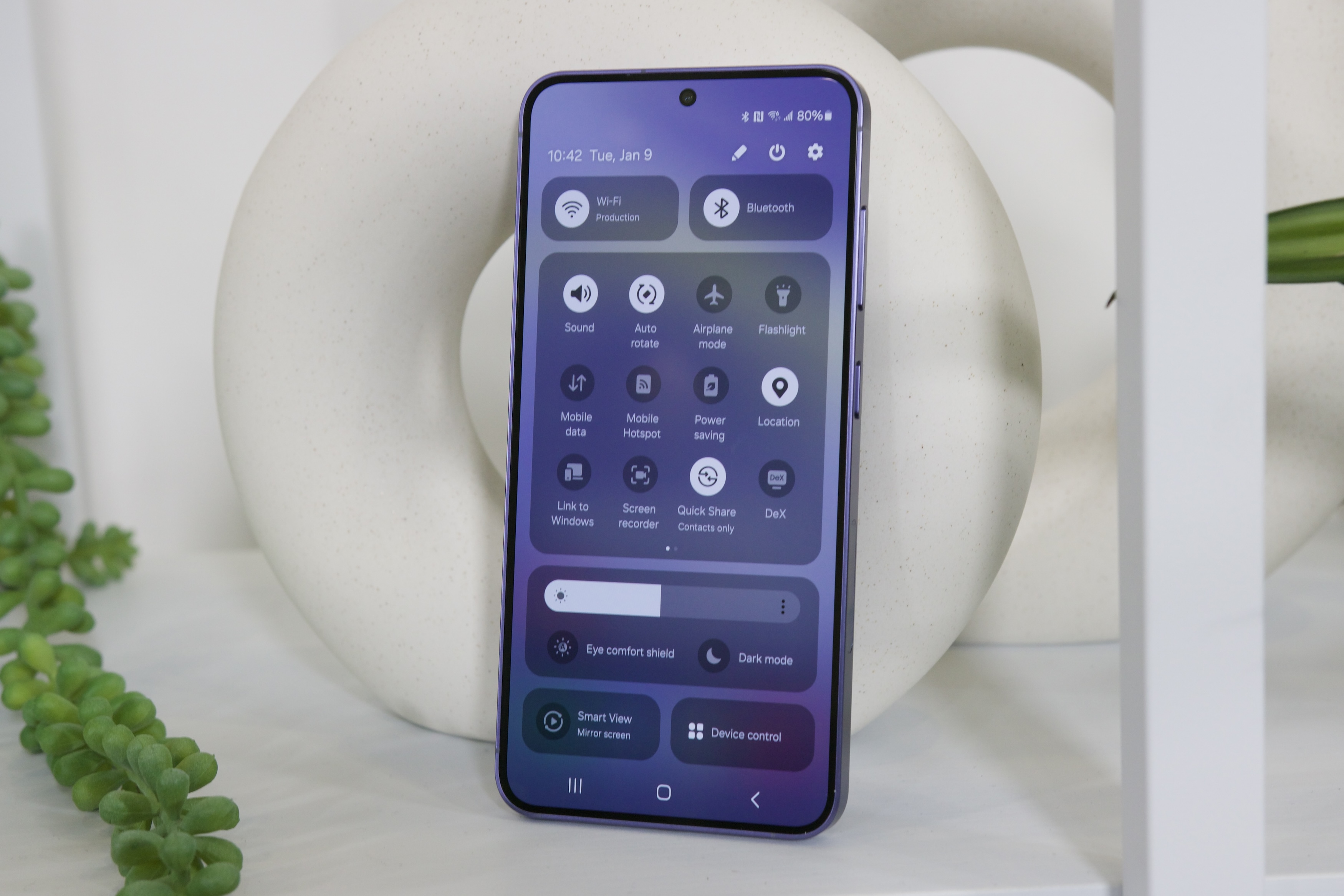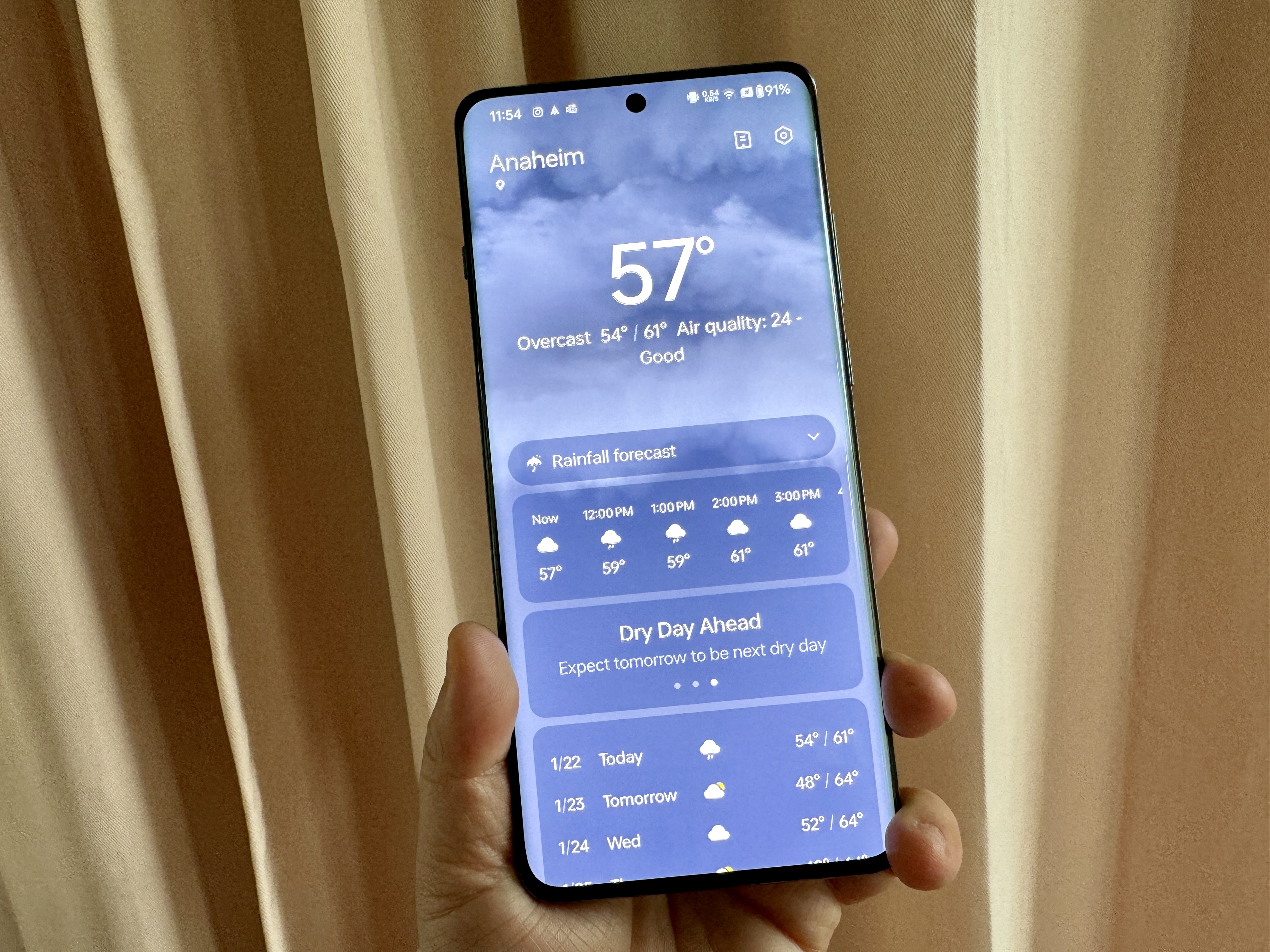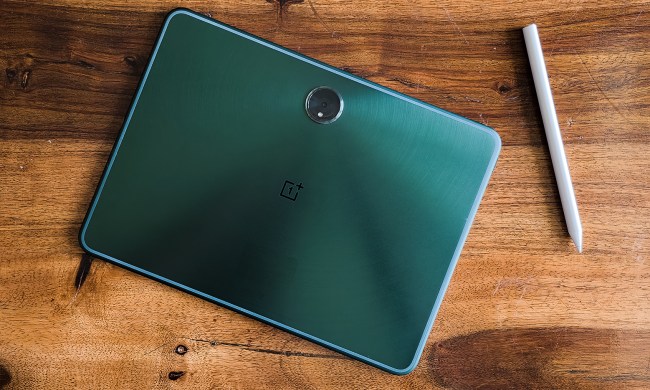
The size increase may not be everyone’s cup of tea, but the Samsung Galaxy S24 is a crushing success anyway. Samsung’s new smaller flagship has a powerful new processor, an upgraded display, and Samsung’s cutting-edge Galaxy AI. If you’re looking for a powerful phone at a price less than four figures, then the Samsung Galaxy S24’s $800 price tag is sure to appeal.
- Samsung Galaxy S24 vs. OnePlus 12: specs
- Samsung Galaxy S24 vs. OnePlus 12: design and display
- Samsung Galaxy S24 vs. OnePlus 12: performance, battery life, charging
- Samsung Galaxy S24 vs. OnePlus 12: cameras
- Samsung Galaxy S24 vs. OnePlus 12: software and updates
- Samsung Galaxy S24 vs. OnePlus 12: special features
- Samsung Galaxy S24 vs. OnePlus 12: price and availability
- Samsung Galaxy S24 vs. OnePlus 12: which should you buy?
But OnePlus is ready with a strong competitor of its own. The OnePlus 12 is a larger phone with the same power, a capable camera suite, and some blindingly fast charging speeds. At the same price, you’ve got a tough job deciding between the two of them, and looking at long lists of specs can quickly make you feel dizzy. That’s why we’re here; we’ve crunched the numbers, placed them side-by-side, and broken down what it means so you don’t have to. Here’s how the Samsung Galaxy S24 compares to the OnePlus 12 — and which one you should buy.
Samsung Galaxy S24 vs. OnePlus 12: specs
| Samsung Galaxy S24 | OnePlus 12 |
|
| Size | 147.1 x 70.6 x 7.6 mm (5.79 x 2.78 x 0.30 inches) | 164.3 x 75.8 x 9.2 mm (6.47 x 2.98 x 0.36 inches) |
| Weight | 168 grams (5.89 ounces) | 220 grams (7.76 ounces) |
| Screen size | 6.2-inch Dynamic AMOLED 2X (Dynamic 1-120Hz) | 6.82-inch LTPO AMOLED (Dynamic 1-120Hz) |
| Screen resolution | 2340 x 1080 resolution at 416 pixels per inch | 3168 x 1440 resolution at 510 pixels per inch |
| Operating system | Android 14 with One UI 6.1 | Android 14 with OxygenOS 14 |
| Storage | 128GB, 256GB | 256GB, 512GB |
| MicroSD card slot | No | No |
| Tap-to-pay services | Google Pay, Samsung Pay | Google Pay |
| Processor | Qualcomm Snapdragon 8 Gen 3 | Qualcomm Snapdragon 8 Gen 3 |
| RAM | 8GB | 12GB, 16GB |
| Cameras | Rear: 50-megapixel primary, 12MP ultrawide, and 10MP telephoto with 3x optical zoom
Front: 12MP |
Rear: 50MP primary, 48MP ultrawide, and 64MP periscope telephoto lens with 3x optical zoom
Front: 32MP |
| Video | Rear: Up to 8K at 30 frames per second (fps), Front: Up to |
Rear: Up to 8K at 24 frames per second (fps), Front: Up to |
| Bluetooth | Yes, Bluetooth 5.3 | Yes, Bluetooth 5.3 |
| Ports | USB-C | USB-C |
| Biometrics | Ultrasonic in-display fingerprint sensor and face recognition | Optical in-display fingerprint sensor |
| Water resistance | IP68 | IP68 |
| Battery | 4,000mAh
Super Fast Charging 2.0 (25W) Fast Wireless Charging 2.0 (15W) Wireless PowerShare (4.5W) |
5,400mAh
Fast charging (80W) Fast wireless charging (50W) Reverse wireless charging (10W) |
| App marketplace | Google Play Store | Google Play Store |
| Network support | ||
| Colors | Cobalt Violet, Amber Yellow, Marble Gray, Onyx Black | Flowy Emerald, Silky Black, Silver |
| Price | From $800 | From $800 |
| Available from | All major offline and online retailers | OnePlus, Amazon, Best Buy |
Samsung Galaxy S24 vs. OnePlus 12: design and display
Putting aside the large size difference, at first glance, the OnePlus 12 and Galaxy S24 are rather similar looking. Viewed from the front, you’ve got a full-screen bezel-less design with a centrally placed hole-punch selfie camera. But flip them over, and these are two dramatically different phones. Where the Galaxy S24 has a rather understated rear panel with three quietly placed camera lenses, the OnePlus 12 explodes with uniqueness. The frosted glass back panel collides with a massive round camera suite, leaving a real impression. Your mileage will vary on which of these you prefer, but we really dig the OnePlus 12’s Frosted Emerald colorway.
That design doesn’t come without its pitfalls, though. The back glass is slippery, and its large size and weight make it difficult to manage with a single hand. The edges are also a bit strange, with tapered curves on the sides but flat edges at the top and bottom. It’s an odd combination that detracts from the otherwise great design. The Galaxy S24 doesn’t suffer from this. It’s smaller and lighter, and the rounded frame has been dropped in favor of iPhone-like flat edges. It may be derivative, but it feels and looks great, and it’s much easier to handle than the big OnePlus 12.
The OnePlus 12 has a 6.82-inch LTPO AMOLED display, running at a 3168 x 1440 resolution, resulting in a crisp 510 pixels per inch. Brightness reaches an insane 4,500 nits, which is almost twice what most other flagship phones offer, and it also benefits from a 120Hz refresh rate. The S24’s 6.2-inch display isn’t as crisp or bright, but at 416 pixels per inch from a 2340 x 1080 resolution, it’s no slouch either. Its big advantage over the OnePlus 12 is its underlying screen tech. The Dynamic AMOLED 2X tech delivers vivid colors and inky blacks. Both phones have 120Hz refresh rates that can scale all the way down to 1Hz when you aren’t interacting with the screen.
This is a tough category to call, as these are two rather different phones. Where the Galaxy S24 is sleek, small, and understated, the OnePlus 12 is big, bold, and unique. The OnePlus phone has a sharper display, but Samsung’s is more colorful. This is a tie.
Winner: Tie
Samsung Galaxy S24 vs. OnePlus 12: performance, battery life, charging
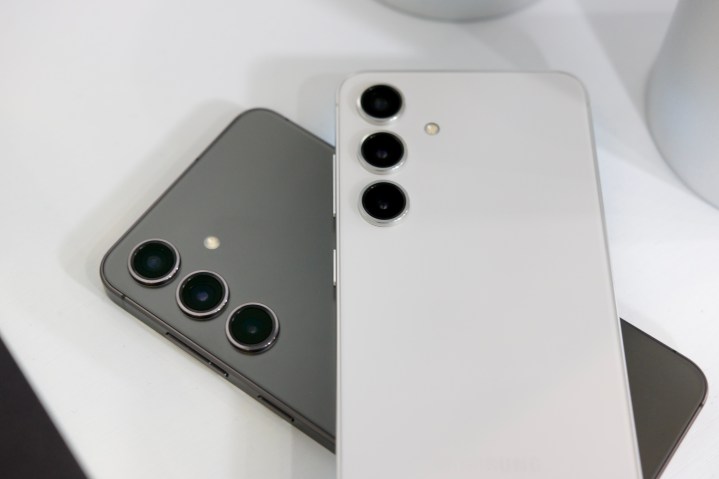
Want power? You’ve got power. Both of these phones are stupendously powerful, thanks to the inclusion of the Qualcomm Snapdragon 8 Gen 3 processor. However, the rest of the specs are quite different. The Galaxy S24 has 8GB of
But one area where the OnePlus 12’s big numbers make a difference is storage. The Galaxy S24 starts at a 128GB storage option, and that’s just not enough storage for 2024 when
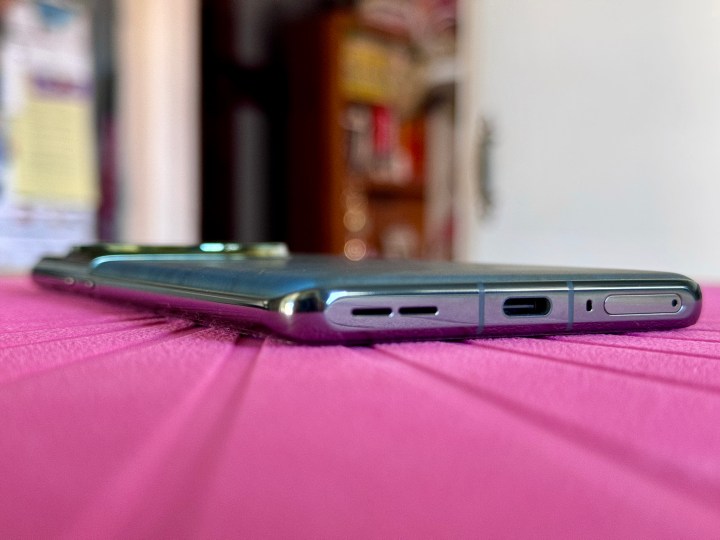
What about battery life? The Samsung Galaxy S24 is a very strong performer here. Even with moderate to heavy use, you can still expect around 30% battery remaining at the end of the day. With lighter use, this can be a two-day
OnePlus also gets the edge with charging. The OnePlus 12’s charging speeds have been toned down in the U.S., but they still top out at 80W, putting the Galaxy S24’s 25W charging rate to shame. Heck, even the OnePlus 12’s 50W wireless charging rate is twice what Samsung is offering through wired charging.
The
Winner: OnePlus 12
Samsung Galaxy S24 vs. OnePlus 12: cameras
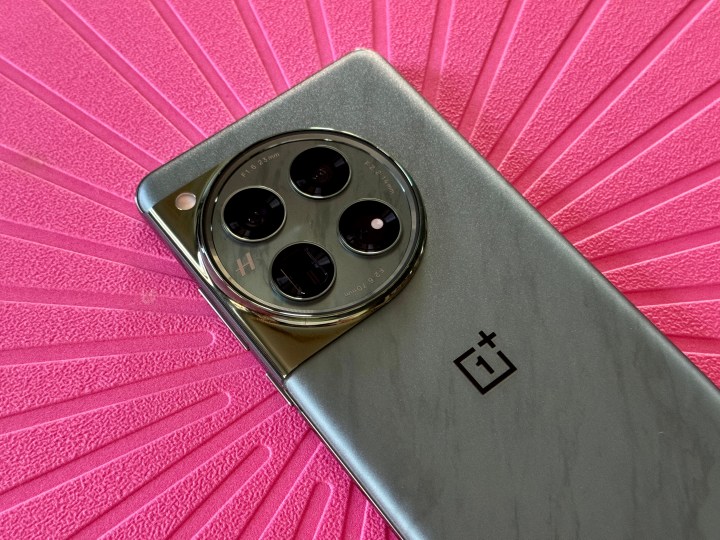
No matter which of these two you pick, you’re gonna get a whole lot of cameras. The Samsung Galaxy S24’s camera is largely unchanged from last year, but given how good it was, that’s not a bad thing. There’s a 50-megapixel main lens, as well as a 12MP ultrawide lens, and a 10MP telephoto with a 3x optical zoom. This is another area where OnePlus’s numbers game is strong, as it has a 50MP main lens, joined by a 48MP ultrawide lens, and a 64MP telephoto lens, also with a 3x optical zoom.
In reality, you’re likely to be happy with either camera setup. The OnePlus 12 does a really great job of capturing pleasing and life-like colors. It also handles moving subjects well. It’s also done a good job with macro and portrait photos.
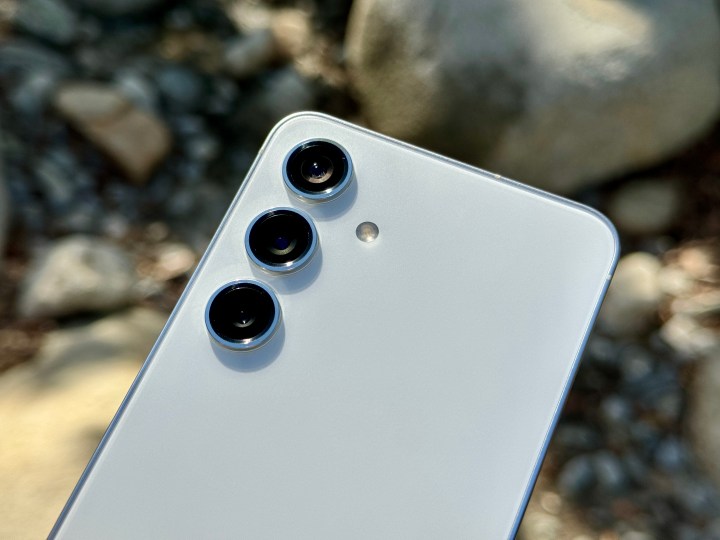
The Samsung Galaxy S24 also does a great job. The S24 still has a tendency to produce more vibrant colors than what you see in real life, but it’s noticeably better than the S23 last year. In our testing, it seems to struggle a bit more with lowlight settings than the OnePlus 12 does.
We’ll continue testing the cameras on both phones over the coming weeks, but with its more true-to-life colors and better lowlight shots, we’re giving the OnePlus 12 the win.
Winner: OnePlus 12
Samsung Galaxy S24 vs. OnePlus 12: software and updates
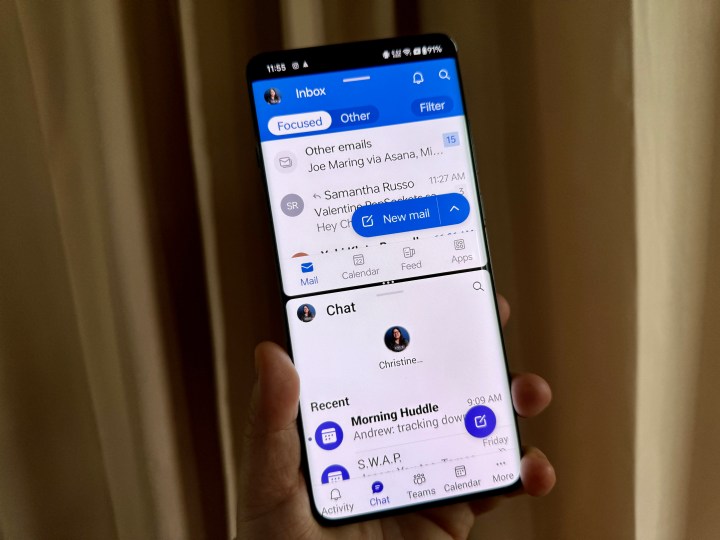
Both of these run Android 14, but you’re getting very different flavors on both. The Galaxy S24 runs One UI 6.1, while the OnePlus 12 runs OxygenOS 14 — and both are manufacturer skins of Android 14. While they have their own design flairs and intricacies, they’ll both run broadly how you expect
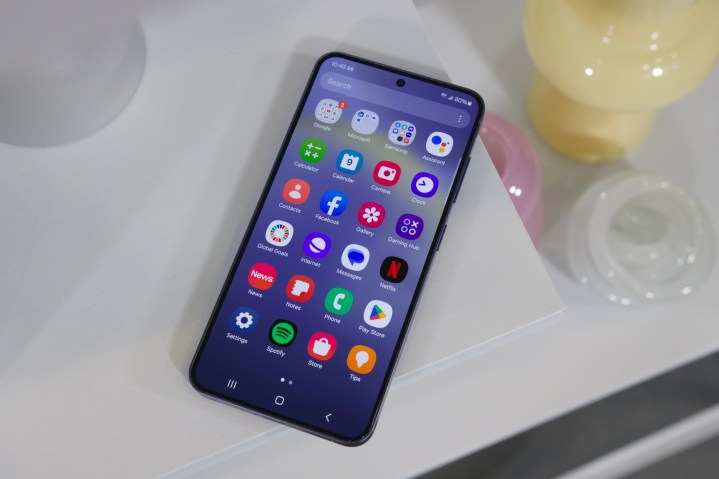
Those manufacturer skins are great but add time to update speeds. Since neither can just push out an updated
Winner: Samsung Galaxy S24
Samsung Galaxy S24 vs. OnePlus 12: special features
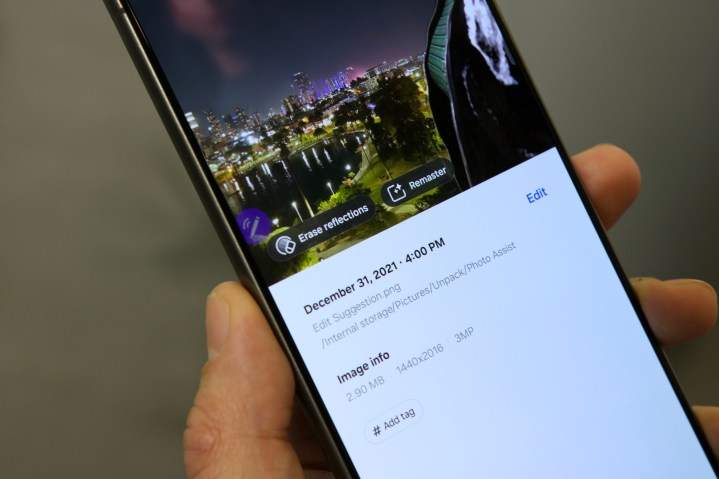
The OnePlus 12 is a little light on special features, and that’s probably because OnePlus has thrown so much into other areas of the phone. After all, getting a massive screen, flagship specs, 256GB of storage as standard, and an 80W charging rate means slack has to be taken in somewhere — and it’s likely because of this the OnePlus 12 doesn’t really have a lot to write home about here. Except for one thing: It has a vapor chamber to help keep the phone cool. Supposedly the largest ever put in a
Unlike OnePlus, Samsung loves a special feature, and its phones are stuffed with them. Some old favorites remain, including the desktop-emulating DeX mode, but a big new feature is stealing the show. Galaxy AI is this year’s big new addition to Samsung’s flagship phones, and while it remains to be seen how useful it actually is, it’s off to a good start. Galaxy AI is similar to other AI tools we’ve seen, like Google’s Magic Editor, but it’s been expanding also to encompass message suggestions and even live translations on phone calls. It’s an impressive collection of tools, and it wins this round.
Winner: Samsung Galaxy S24
Samsung Galaxy S24 vs. OnePlus 12: price and availability

The Samsung Galaxy S24 is currently available, and prices start from $800 for the 128GB variant. As a Samsung flagship, you’re likely to find it at most
The OnePlus 12 is also currently available, and you’ll be looking to pay $800 for the base model. But unlike the Galaxy S24, that base version is 256GB — twice the storage of the Galaxy phone. It’s a little more limited in availability, but you can find it on OnePlus’s website, Amazon, and Best Buy.
Samsung Galaxy S24 vs. OnePlus 12: which should you buy?
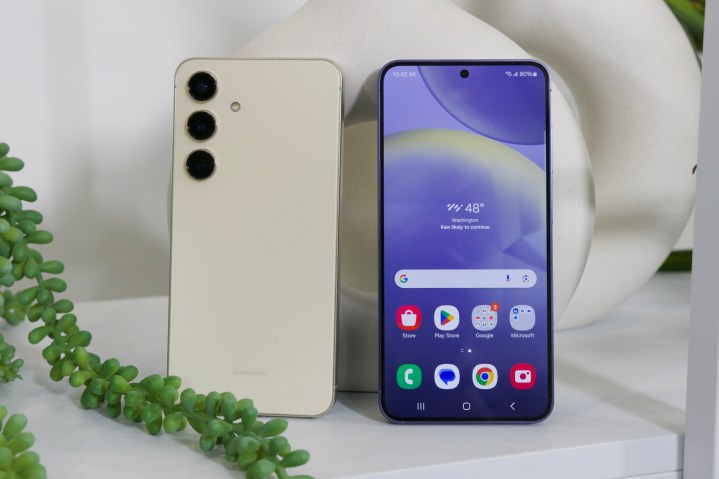
These are two incredible smartphones, and there are a lot of reasons to buy each. But really, it’s easy to boil it down to a single question: How big do you want your phone to be? If you want a big flagship
Let’s go a little deeper: Do you love media, or do you intend to take advantage of
But the Samsung Galaxy S24 is no slouch here either. With the stronger display tech, a pocket-friendly design, and the helpful tricks of Galaxy AI, you’ve got a fantastic pocket pal. The OnePlus 12 offers more bang for your buck and is likely the better choice for most people. But if you really want a smaller phone, the S24 won’t let you down.
